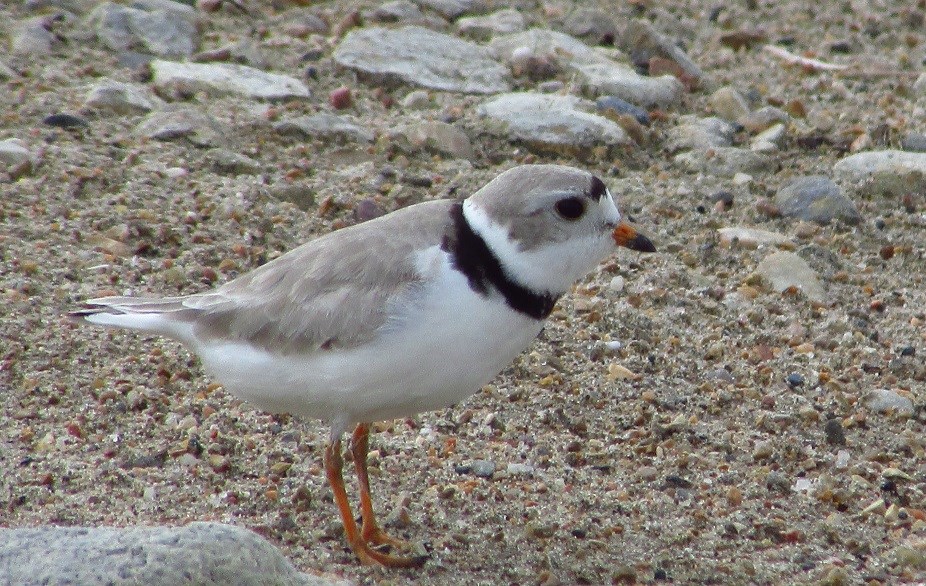It may still feel like summer to us, but Piping Plovers have already begun to prepare for the winter. “Piping Plovers are small migratory shorebirds that nest on sandy or gravely beaches in Saskatchewan during the summer, and spend the winter on the coastal beaches of the Gulf of Mexico and the Caribbean Islands such as Cuba,” says Shirley Bartz, Habitat Stewardship Coordinator with Nature Saskatchewan. “Piping Plovers will begin this southerly journey in early August after the young have spent the month of July growing quickly and practicing their flying skills in preparation for migration,” says Shirley.
The Piping Plover is an endangered species, which means that it is at risk of becoming extirpated in Canada. A total of 799 individual Piping Plovers were counted in Saskatchewan during the International Piping Plover Breeding Census in 2016. Although this number is a slight increase from the 778 plovers counted in 2011, it is still far below the 1,435 plovers counted in Saskatchewan during the 2006 census. This little shorebird still needs our help!
Piping Plovers face numerous threats, including predation of chicks and eggs, human recreational disturbance, and livestock traffic on shorelines, which can cause deep hoof-prints that may potentially trap chicks, and trampling of nests. Water management in reservoirs and lakes can also endanger plovers. If water levels rise, nests can be flooded at the shoreline or adults and juvenile Piping Plovers can be forced up the beach into habitat without the moist sandy soil that supports their invertebrate prey.
Identifying Piping Plovers can be easy if you know what to look for. Piping Plovers have a single black neckband, whereas a similar species, called a Killdeer, has two black neckbands. Piping Plovers are also smaller than Killdeer, and have orange legs rather than the dark yellow legs of a Killdeer. Plovers have a lighter grey back than the Killdeer’s brown back, and the Piping Plover’s breast is white. Another distinguishing feature of the Piping Plover is the black tip on its orange bill.
Nature Saskatchewan has a voluntary land stewardship program for landowners with Piping Plovers on their land. This program, “Plovers on Shore”, involves a voluntary “handshake” agreement where the landowner agrees to conserve shoreline habitat for these endangered birds. To learn more about the Piping Plover, or if you have Piping Plovers on your shoreline and would be interested in a face-to-face visit and discussion with the Plovers on Shore Coordinator, please contact Nature Saskatchewan at 1-800-667-4668 or (306) 780-9832.




